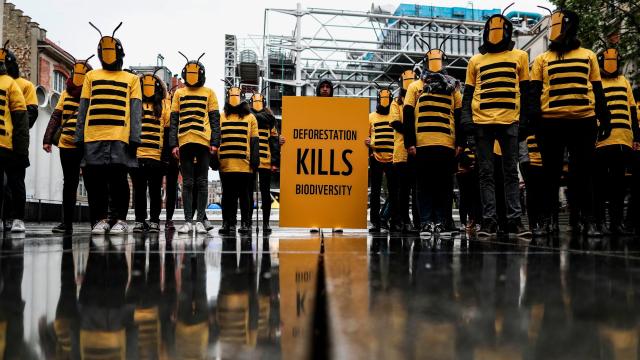The animals need saving. From fires, from deforestation, and from climate change, of course. That’s why the United Nations Convention on Biological Diversity released Monday its first draft of an update to the global biodiversity treaty. And these targets are just as much about people as they are about wildlife.
World leaders will consider the document when they meet next month in China for a meeting in preparation for the United Nations Biodiversity Conference this year where this document will be finalised. And leaders have some pretty ambitious propositions on the table. The “Zero Draft” of the Post-2020 Global Biodiversity Framework sets out clear targets for countries to meet by 2030 and 2050 to not only protect wildlife but also better prepare for climate change.
Here’s the vision: “a world of living in harmony with nature.” And just how do we accomplish that? Reduce extinction threats, create more protected areas, and rethinking our consumption habits. The benefits of helping wildlife are clear: access to safe and drinkable water and natural-disaster resilience, to name a few.
You see, animals aren’t just cute critters that exist for our entertainment. They’re part of complex food chains and ecosystems. Every animal—from the biggest to the smallest—plays an important role here. If one piece falls apart, the whole thing threatens to collapse. So by 2030, the United Nations would like to see no more reduction to marine, terrestrial, and freshwater habitat by 2030.
By 2050, in fact, these spaces should increase by at least 20 per cent. That’ll happen, in part, by establishing protected areas for where there’s high biodiversity. By 2030, at least 60 per cent of these biodiversity hotspots should be protected. This treaty proposes nature-based solutions to the climate crisis that should make up 30 per cent of the greenhouse gas reduction targets by 2030. I’m talking about carbon sinks in the form of forest and wetlands.
What’s most remarkable about the draft text is how seamlessly the UN has brought people to the mix. For one, indigenous people have been living in harmony with the world’s wildlife for, well, forever. The text proposes working closely with these communities so that we can learn from their ancient knowledge. The document reads:
Promote education and the generation, sharing and use of knowledge relating to biodiversity, in the case of the traditional knowledge, innovations, and practices of indigenous peoples and local communities with their free, prior and informed consent, ensuring by 2030 that all decision makers have access to reliable and up-to-date information for the effective management of biodiversity.
The ultimate goal of this global treaty is to prevent mass extinction from killing off vast swaths of flora and fauna. What the text reminds us is that this loss will have direct impacts on human society. Biodiversity contributes to increased nutrition and improves water quality. Humans will suffer if we don’t take appropriate action now to protect species. The Convention of Biological Diversity is due for an update that accurately takes into account the climate crisis—and all the ways biodiversity can help us stop it.
Unfortunately, this treaty may look very different by the time world leaders decide whether to sign on in October. Its targets are pretty bold right now, so let’s hope that the world is willing to do the work to protect nature’s treasures.
